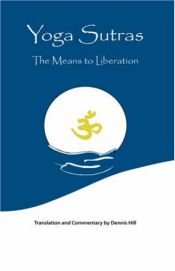Yoga Sutras: The Means To Liberation
Über
The Yoga Sutras were compiled about 2,000 years ago by the sage Patanjali from an oral tradition reaching back into unknowable antiquity. He gives us the essential wisdom for the practice of yoga and meditation to know, first hand, the essence of our true Self-the conscious indweller that enlivens this body. Experiencing the fully conscious state shows us the essential transcendent nature of the universe to bring us a state of undisturbed joyous tranquillity. Traditionally, this wisdom has been handed down from master to student as a transmission of the means to liberation. Patanjali tells us that the pure blissful inner Self is already attained and all that is required is to lose interest in that which is not the Self. This is pretty straight forward, and we learn all we need to know in the first three sutras. Presuming we will not get it the first time, he goes on to detail the nature of the Self, the practices that will awaken us, the attainments that arise from the practices and then explains about the state of final liberation. Throughout the book we are reminded of two fundamental practices that lead to the final state, kaivalya. One practice is vairagya (dispassion, non-attachment) and the other is viveka (discrimination). In the practice of viveka, we learn to discriminate between the mind and the watcher of the mind (consciousness itself). When we can rest in the state of consciousness knowing itself; we answer the question, "Who am I?"
Also available from this author: The Inner Yoga of Happiness

 Deutsch
Deutsch English
English Español
Español










Mitglieder-Rezensionen Eigene Rezension schreiben
Schreibe die erste Rezension
Zum Kommentieren bitte Anmelden